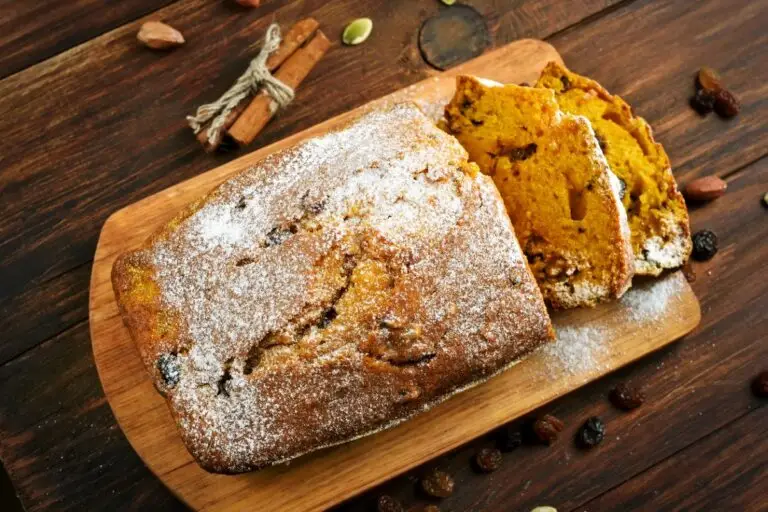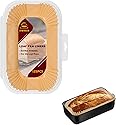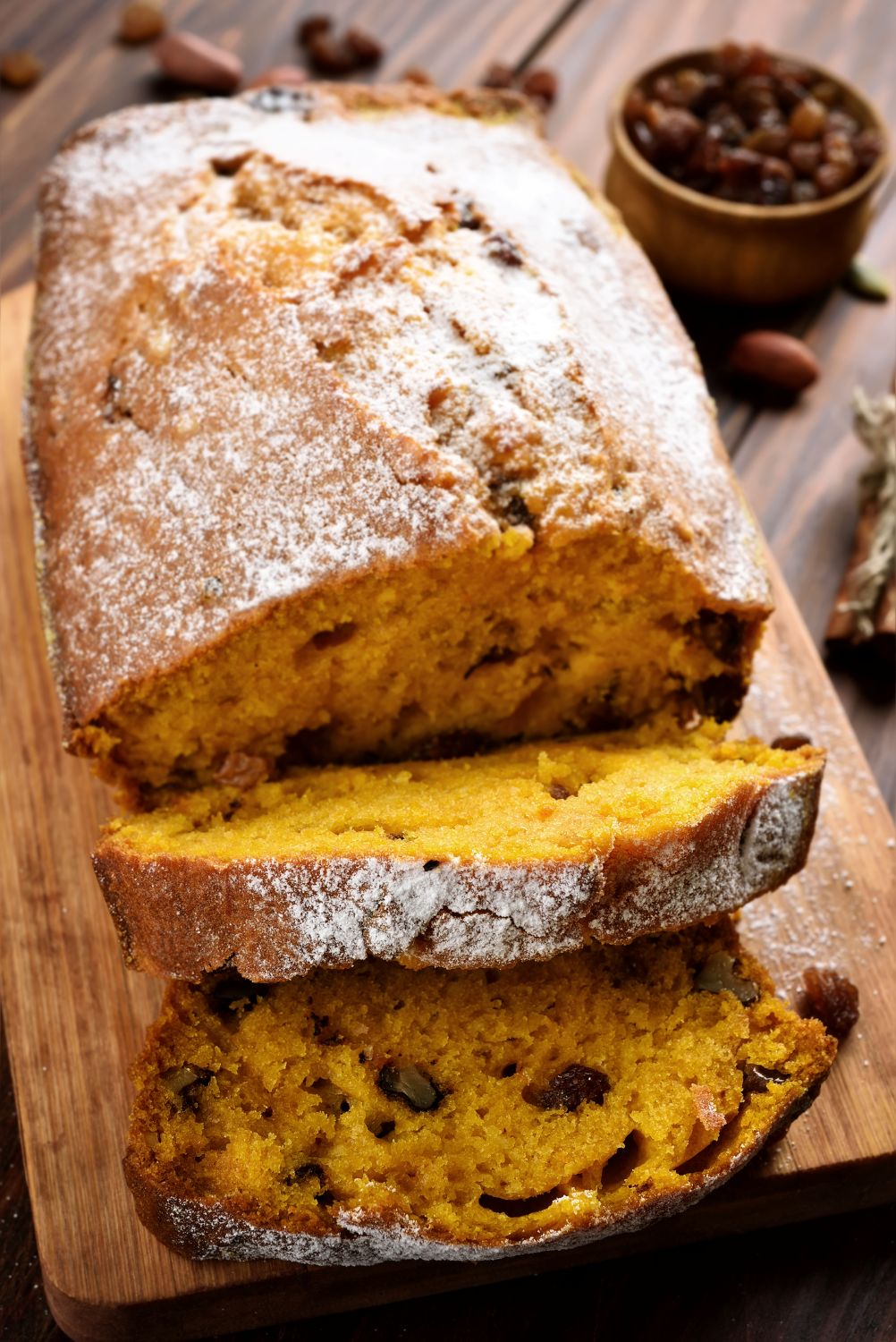This vintage apple cider sweet potato bread from 1939 delivers a tender, cake-like crumb that stays incredibly moist for days thanks to the natural sweetness of mashed yams and tangy apple cider. The combination of warm spices, plump raisins, and toasted walnuts creates a quick bread that tastes like autumn wrapped in nostalgia.
Picture a cool November afternoon in 1939, when the harvest had been carefully preserved and sweet potatoes were finally ready for cooking. The aroma of cinnamon and cloves drifting through the kitchen meant someone was baking something special. This bread carried the warmth of the season in every spiced, fruit-studded slice.
1939 American Kitchens
By late 1939, American families were finally seeing glimmers of hope after a decade of economic hardship. The Great Depression was beginning to ease as wartime production ramped up, though frugality remained deeply ingrained. Sweet potatoes had become a beloved staple during these lean years because they stored beautifully through winter and could stretch into countless economical dishes.
In rural kitchens across the South and Midwest, families grew their own sweet potatoes and pressed their own apple cider each fall. Radio programs like "Fibber McGee and Molly" played in the background while mothers mixed up batches of quick breads that required no yeast, saving precious time and ingredients. This recipe exemplifies the resourcefulness of the era, transforming humble root vegetables into something that tasted almost like cake, a special treat when sugar was still carefully rationed in many households.
George Washington Carver had been championing sweet potatoes since the 1920s, publishing recipes and techniques that helped families make the most of this nutritious crop. As a result, by 1939, his influence had made sweet potato breads, pies, and puddings commonplace in American home baking.
What Makes This Sweet Potato Bread So Special

1939 Apple Cider Sweet Potato Bread Recipe
A remarkably moist vintage sweet potato bread from 1939 featuring apple cider, warm fall spices, walnuts, and dark raisins. This cake-like quick bread stays tender for days and freezes beautifully.
- Total Time: 1 hour 20 minutes
- Yield: 12 servings 1x
Ingredients
- 4 cups all-purpose flour
- 1 tablespoon baking powder
- 2 teaspoons baking soda
- 1 1/2 teaspoons salt
- 2 teaspoons ground cinnamon
- 1 teaspoon freshly grated nutmeg
- 1/2 teaspoon ground cloves
- Powdered sugar for dusting
- 1 pound (2 1/2 cups) light brown sugar, packed
- 2 cups sweet potatoes, precooked and thoroughly mashed or pureed
- 1 cup apple cider (preferably unfiltered)
- 4 large eggs, beaten to a froth
- 1 cup butter or margarine, softened at room temperature
- 1 1/2 cups chopped walnuts
- 2 cups dark raisins
Instructions
- Preheat and prepare: Preheat oven to 350°F. Grease three 9x5x3-inch loaf pans generously with butter or cooking spray; set aside.
- Mix dry ingredients: Into a large bowl, sift together flour, baking powder, baking soda, salt, cinnamon, nutmeg, and cloves. Set aside.
- Cream butter and sugar: In a second large bowl, cream butter and brown sugar together until light and well blended, about 2-3 minutes with a hand mixer or wooden spoon.
- Add wet ingredients: Add pureed sweet potatoes, apple cider, and beaten eggs to the butter mixture. Stir until smooth and thoroughly blended.
- Combine wet and dry: About 1 cup at a time, add the flour mixture to the sweet potato mixture, stirring well after each addition. Do not beat this batter; gentle stirring is key to a tender crumb.
- Fold in mix-ins: Fold in chopped walnuts and dark raisins until evenly distributed.
- Fill pans and bake: Spoon batter into prepared loaf pans, dividing evenly. Bake until medium golden brown on top, about 45 minutes to 1 hour. Check doneness with a toothpick inserted into the center of one loaf; if it comes out clean, the loaves are done.
- Cool and dust with powdered sugar: Remove loaves from oven and let stand in pans about 10 minutes, then turn onto a wire rack to cool. While the bread is still slightly warm to the touch (about 20-30 minutes after removing from the oven), dust the tops with powdered sugar using a fine-mesh sieve or sifter. The bread should be cool enough that the sugar won’t completely melt, but warm enough that it adheres nicely to the surface.
- Serve warm or at room temperature.
Equipment

Stainless Steel 9×5 Loaf Pans Set of 3
Buy Now →
Loaf Pan Parchment Liners for Baking Bread 9×5
Buy Now →- Prep Time: 20 minutes
- Cook Time: 45-60 minutes
- Category: Bread
- Method: Baked
- Cuisine: American
Nutrition
- Serving Size: 1 slice
- Calories: 215
- Sugar: 20g
- Sodium: 180mg
- Fat: 8g
- Saturated Fat: 3g
- Carbohydrates: 34g
- Fiber: 2g
- Protein: 3g
- Cholesterol: 35mg
How to Make Perfect Apple Cider Sweet Potato Bread
Recipe Variations, Serving Ideas, and Storage
Recipe Variations
Frequently Asked Questions
Yes, canned sweet potato puree (not pie filling) works perfectly in this recipe. Drain any excess liquid and measure out exactly 2 cups for accurate results.
In the United States, what we call "yams" are actually orange-fleshed sweet potatoes. True yams are a different botanical species rarely found in American grocery stores. This recipe works beautifully with any orange-fleshed sweet potato variety.
Standard 9x5-inch loaf pans are ideal, but you can use 8x4-inch pans for taller loaves (add 5-10 minutes to baking time) or make muffins instead (reduce baking time to 20-25 minutes).
Overmixing the batter after adding flour is the most common culprit. Stir gently just until combined, and don't beat. Using too much sweet potato puree or not measuring flour accurately can also create density issues.
Yes, use ¾ cup neutral vegetable oil in place of the 1 cup butter for a slightly different but still delicious result. The bread will be a touch less rich but will stay moist even longer.
Insert a toothpick into the center of a loaf; it should come out clean or with just a few moist crumbs. The tops should be golden brown and spring back when lightly touched.
Replace the butter with coconut oil or vegan butter substitute in equal amounts. The flavor will be slightly different but the texture remains excellent.
Unsweetened apple juice works well, though it's less tangy. Add 1 teaspoon apple cider vinegar to mimic the acidity that tenderizes the crumb. Orange juice is another option that creates a citrusy variation.
This is completely normal and desirable. The dense batter bakes from the outside in, and as the moist interior expands, it cracks the top surface. This crack is a sign of a properly baked quick bread.
You can reduce the brown sugar to 1½ cups without drastically affecting texture. Going lower than that may result in a drier, less tender crumb since sugar also holds moisture.
What's your favorite way to enjoy sweet potato in the fall? If you make this 1939 apple cider sweet potato bread, please leave a rating and review!

0 comments